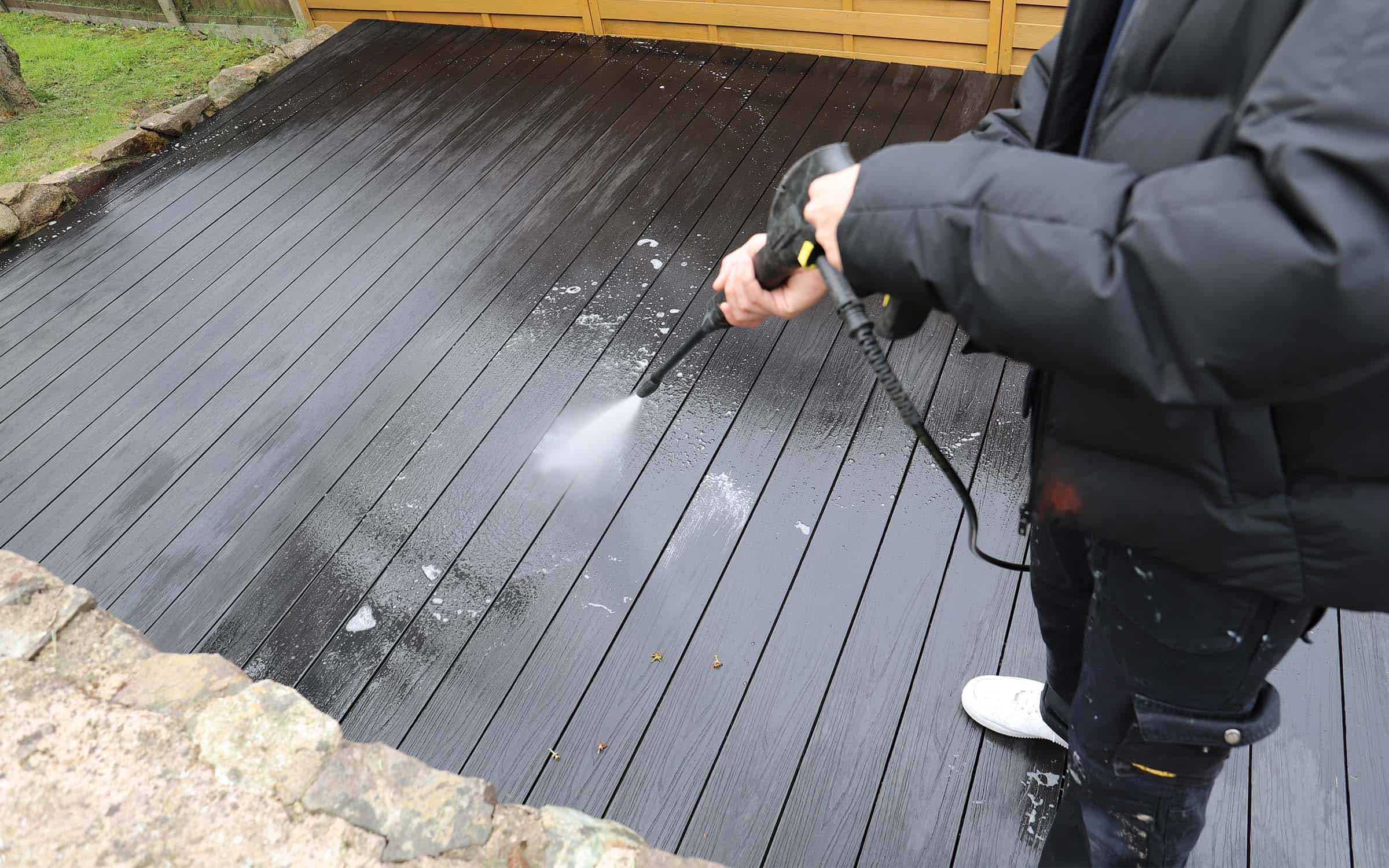
Composite decking is a popular alternative to wood—it’s durable, low-maintenance, and weather-resistant. But like anything exposed to the elements, it still collects dirt, mildew, pollen, and grime over time. So it’s natural to wonder: Can I pressure wash my composite deck? 💦
The answer? Yes, but with caution. Composite decking can be pressure washed safely, but using the wrong settings or technique could lead to damage like etching, stripping, or voiding your warranty.
In this article, we’ll explore how to clean your composite deck with a pressure washer the right way so you can restore its original beauty without causing harm. ✅
🧱 What Is Composite Decking?
Composite decking is made from a mix of recycled plastic and wood fibers. Popular brands like Trex, TimberTech, and Fiberon are designed to mimic wood, but resist:
- Rot
- Insect damage
- Splintering
- Fading
However, the outer layer—often capped with a plastic coating—can be damaged by too much pressure or an incorrect spray pattern. That’s why technique matters. 🎯
🛑 Why You Should Be Careful With Pressure Washers
Using a pressure washer incorrectly on composite decking can lead to:
- Etching: Permanent visible marks on the surface
- Stripping: Damaging the outer protective cap
- Splitting seams: If boards are weakened or loosely installed
- Voiding warranties: Some manufacturers don’t cover damage from improper cleaning
🔧 Composite boards are more resilient than wood, but they’re not indestructible. You don’t need brute force—you need precision.
✅ Best Practices for Pressure Washing Composite Decks
1. Use the Right Pressure Setting
Set your pressure washer to:
- 1,500 PSI or lower
- Anything above 2,000 PSI is risky for composite materials
⚠️ Higher pressure doesn’t mean cleaner—it just increases the chance of damage.
2. Use a Wide Spray Nozzle
Stick to:
- 25° (green) or 40° (white) nozzles
- Avoid narrow-angle nozzles like the 0° red tip—they can gouge the surface
💡 Hold the wand at least 8 to 12 inches from the deck surface and spray at a slight angle, not directly downward.
Browse Amazon Here For Popular Pressure Washers And Accessories
3. Sweep and Pre-Rinse First
Before spraying:
- Sweep off loose dirt, leaves, or debris
- Use a garden hose or low-pressure rinse to wet the deck
💦 This helps loosen surface dirt and ensures even cleaning.
4. Apply a Composite-Safe Cleaner (Optional)
You can apply a mild cleaner made for composite decks, especially if you’re dealing with:
- Mold
- Mildew
- Grease
- Stains from leaves or food
🧴 Apply with a pump sprayer or brush and let it sit per manufacturer instructions. Then, rinse thoroughly with the pressure washer on low pressure.
✅ Look for cleaners labeled “safe for composite or synthetic decking.”
5. Spray in Sections and Keep Moving
- Work in small sections
- Use long, even strokes
- Never hold the spray in one spot too long
🚫 Staying in one place can cause uneven cleaning or gouging.
6. Let It Dry and Inspect the Surface
After cleaning:
- Let the deck dry completely
- Inspect for areas that may need a second pass or hand-scrubbing
- Avoid walking on it until it’s dry to prevent dirt re-settling
🌞 Sunny, dry days are ideal for this task.
💬 What If I Don’t Have a Pressure Washer?
No problem! You can still clean your composite deck by:
- Scrubbing with a soft-bristle brush
- Using a hose with a high-pressure nozzle
- Applying composite-safe cleaner and rinsing well
It’ll take more elbow grease but gets the job done safely.
🧠 Final Thoughts
Yes, pressure washing can be safe for composite decking—if you do it right. Stick to low pressure, wide spray angles, and gentle techniques to restore your deck without damage. 🪵💦✨
To recap:
- Use 1,500 PSI or less
- Stick to 25° or 40° nozzles
- Keep the wand at least 8″ away
- Clean in smooth, even strokes
- Always check manufacturer guidelines
Your composite deck deserves care—but with the right approach, you can bring it back to life and enjoy a cleaner, safer outdoor space. 😎🌿
Browse Amazon Here For Popular Pressure Washers And Accessories






